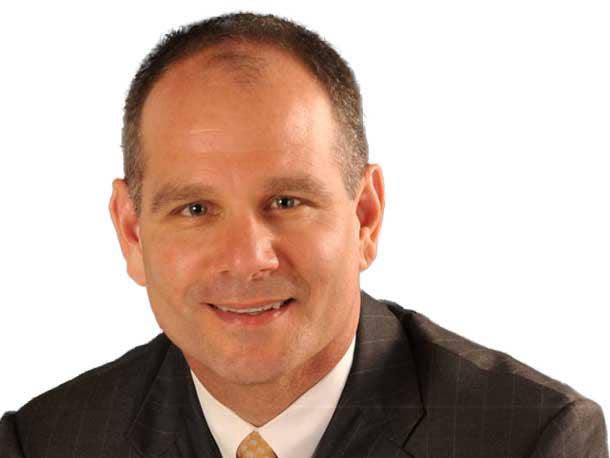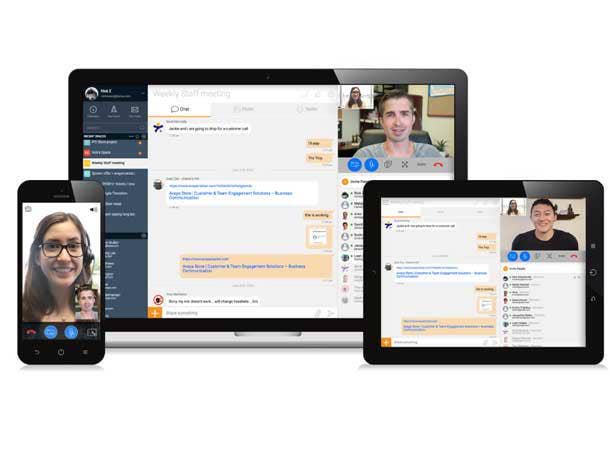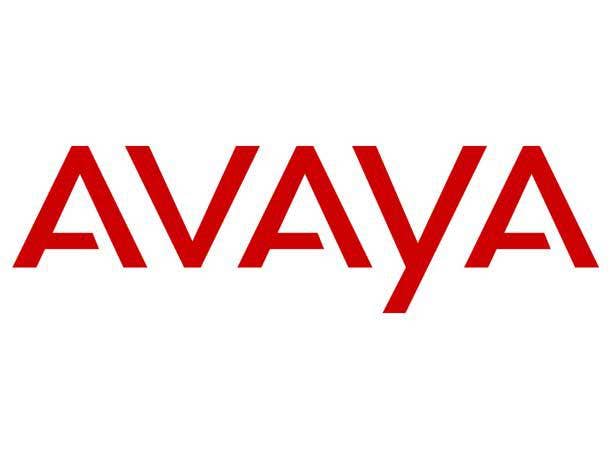New CEO Alan Masarek: ‘Avaya’s Opportunity For Future Success Is Stronger Than Its Past Performance’
The former Vonage CEO and Avaya’s new leader opened up his playbook for the unified communications powerhouse with CRN that includes a focus on cloud, cultivating transparent relationships with partners and customers and an internal ‘cultural revitalization.’

Setting Up For The Future
Unified communications powerhouse Avaya has been a company in flux in recent years. But Alan Masarek, the company’s new CEO who’s been at the helm for two weeks, is already confident that the company’s massive base of large enterprise customers, coupled with a major cloud transition, will set up the company for future growth.
But it won’t come without a heavy lift.
Following a substantial earnings miss with revenue that declined 20 percent during the company’s third-quarter 2022, which ended June 30, Durham, N.C.-based Avaya made the move to replace Jim Chirico, the company’s CEO since 2018. Masarek was brought on effective Aug. 1 as president and CEO and is no stranger to companywide transformations. He sat in the CEO seat for Vonage for six years and has been credited with pivoting the company away from a consumer-focused service provider with shrinking revenue to a cloud communications specialist serving business clients.
Avaya’s next moves will be a multistep process that includes shifting the portfolio and customers entirely to cloud—whether it’s private, multitenant or somewhere in between. It will also include a “cultural revitalization” that will allow Avaya to bring in the right talent for the work ahead, Masarek told CRN in an interview.
Masarek talked with CRN about his move to Avaya, the problems the company is facing right now, and his road map that Avaya’s crucial partner base need to know about.
Here’s what Avaya’s new leader had to say.

How will you leverage your experience leading Vonage inside Avaya?
My interest in joining [Avaya] has been around for a while. I understand the industry obviously very well, having been with Vonage for almost six years. I’ve always believed that Avaya’s opportunity for future success is better than its past performance, to speak candidly. If you are familiar with the whole story of Vonage, what we did was a fundamental transformation of that business. It was a legacy residential telephony company when I got there, and that piece was already in a multiyear decline. We pivoted the business to go after B2B and ultimately became a global enterprise communications company. We drove increased revenue and increased profitability. So, I look at the situation with Avaya and the reason I’ve been so intrigued about it for a long time is I think there is an extraordinary amount of asset value that you can’t replicate. Ninety-thousand customers in 190 countries is the most global of any of the companies out there. Avaya’s customers are the largest of the large enterprises, again, globally. [We’ve] got 106 million seats and talking about the channel side, we have a massive channel ecosystem. That channel runs the gamut from VARs, resellers, distributors and the master agent channels. It’s a huge force multiplier for what we’re able to do on our own. We have big direct forces, but channel relationships are super, super important to us. So when I look at that as an asset base, there’s so much to work with—you can’t replicate that. That’s taken a lifetime to create that customer base. So, that’s an asset that we sort of inherit. But what I can do now is [make] sure that the technology development is considering modern architectures. I certainly could drive that—that’s precisely what we did at Vonage. That was the element of the transformation. [Avaya] is several years into this. We track our ARR [annual recurring revenue] as we move more and more to a recurring model. We grew this quarter 12 percent sequentially in OneCloud ARR and 97 percent year over year. That’s a big ARR base of $838 million as of the quarter that just ended. In the quarter, we signed 92 customers over $1 million of TCV [total contract value]. Clearly, we continue to be very, very strong in the enterprise. Thirteen hundred new logos as well. And then the recurring revenue, as we move the model from the Capex license to recurring, is now 70 percent of the revenue up from 64 percent last year. So, there’s lots and lots of progress underway against a very, very large asset base, which is, in my view, an unreproducible asset base.
The final piece of the puzzle, in my opinion, is sort of this cultural revitalization, which I think is necessary here as well. That’s clearly what I did Vonage. We at Vonage set that ambition, which I’m setting here as well, to become a destination place to work so that we can attract the most talented in our industry. But you know, like all these things, you’ve got to go beyond cultural change. It’s a journey without destination; you’re always making it better. And I think it’s super, super important to our partners, to our customers, to our employees, to just go out there with this fresh, revitalized culture. You’ll hear me say all the time, over and over again, create open, honest, direct and transparent relationships with your employees, with your partners [and] with your customers. And if we do that and bring in the right talent centers, etc., we’re going to take that asset base and be very successful going forward. It goes back to that opening premise, which is I think the future opportunity is a lot better than the past performance. And that’s what I’m here to achieve.

Why did Avaya’s revenue decline so sharply in the last fiscal quarter?
The biggest part of the mess—about two-thirds of it—was the subscription. The reasons were tied to contact duration—length of contract and contract size—for purposes of [revenue recognition]. What happens is customers sign a shorter-term contract, or let’s say there’s a cancellation clause in the contract [for] future performance obligation. While the contract value may be, let’s say, $1 million a year for three years but it’s cancellable after one year, you can’t treat it as a $3 million TCV. So, there’s all sorts of nuance from a [revenue recognition] perspective that gets depressed when you have, from a TCV perspective, smaller [contract] size and smaller duration together. The other side is, we had customers who renewed maintenance instead of flipping into a multiyear subscription contract.
We’re diagnosing these issues as quickly as we can. It seems like maybe the implication is that we were in market with this financing very publicly with a lot of swirl. [It] took a long time to premarket it, launch it, close it, and that, I think, created a lot of worries about these upcoming debt maturities, which is what our refinancing took care of. And I think what you saw was customers sort of taking a more cautious approach with us, as reflected in a short-term contract or a cancellation clause, or, ‘Hey, I’m just going to renew my maintenance thing and see how you guys are doing. Maybe next year I’ll do the longer subscription.’ That was about two-thirds of the mess. The other side was the old Capex licensing model. Some of it downsized, some of it was lost, and it happened proportionately across all theaters in the world. There’s no particular culprit, which makes me think it’s the same thing, a sort of caution because of financial instability or worries of financial stability that were out there rampantly in our Q3.

Is the focus for the company right now on cloud and converting its large base of enterprise customers to cloud-based solutions to return to growth?
It’s certainly the focus to continue to get CAPS [Cloud, Alliance Partner and Subscription revenue] to grow. Whether you bring in new customers on subscription or convert existing customers to subscription; we’ll continue to move our product into more and more of a cloud product, so now, it’s not just changing the revenue model to subscription, it’s changing the underlying product to what our large customers want and expect from us. So, again, the beauty here is that we’re several years into doing that.
There’s plenty of room [to move legacy enterprise customers into cloud]. There’s private cloud [the business] is hosting, there’s us hosting private cloud, and then there’s a true multitenant cloud solution. A lot of the noise in our industry in recent years have been around multitenant solutions. The largest of the large enterprises and governmental agencies have been slower to adopt [cloud] for a whole host of reasons, like security, so it’s given us a window to develop it in a smarter way that hits our customer set where they need it since many of them are not yet ready to go fully to some multitenancy cloud solution. But over time, those trends are going to accelerate. If you take an on-prem architecture and all you do is move it to a subscription revenue model, that’s the bottom piece of the layer the cake, then you go to a private cloud that the customer hosts, then a private cloud that we host and then ultimately, to a multi-tenant solution, there’s all sorts of add-ons that come in as you go on that progression. I think we’re still really early innings with this with our customer base.
Is there any room to offload some of the customization work that Avaya does for some large enterprise customers to partners?
There definitely is. I’ve had some very preliminary conversations about [this]. Frequently, there’s a partner who’s down the street from a particular customer and there’s work that needs to be done that they’re clearly better suited for compared to us. So, I want to make sure that we focus on what we do well and scale the projects that we can do well, and make sure that we partner with our partners for them to do their part —it’s good for their business [and] it’s good for our business. Most importantly, it’s the best answer for a good customer. The North Star is what’s in the best interest of that customer.

What can partners and customers expect from Avaya during your first year at the helm?
It’s obvious to me that Avaya has a tremendous opportunity for success, yet its past performance at times has been challenged financially. So, when I think about this first year, I want to make tangible steps to realize that success. And I think there’s lots and lots of low-hanging fruit to do just that. So, making sure that we are optimizing the relationship with our channel partners is a key thing. So, I’m going to be very visible—I’m starting to talk to them now. I’ll be very visible with all our major partners and then all the industry events with our partners to make sure that I’m listening to what their needs are and that we do everything we can to optimize those relationships so we can collectively serve our customers best. The second thing is, I have every expectation that we’re going to begin to see really the fruits of some of this road map development work that’s going on. My goal for the customers and for the partners as well is: ‘Here’s a reliable road map,’ and the operative word is ‘reliable.’ The third thing is cultural revitalization. It has already started in terms of creating an environment [that is] open, honest and transparent with everyone, whether it’s internal, external, a customer, a partner, whatever. Let’s recognize what doesn’t work, fix it, and move on. If we can look back 12 months from now and say you have seen meaningful improvement in relationships with partners, meaningful improvement in product, and a meaningful change in culture in general, I think that’s a victory.
We view the relationship with the partners as incredibly important. It’s the lion’s share of our distribution. It creates a massive ecosystem for us. It’s the majority of our revenue across the globe. So, it really is a partnership. So, how do we work together to jointly best serve our collective customers? That’s exactly the way we look at it. My intention is to continue to invest in that and continue to promote those channels relationships. This week I’ve got calls with a bunch of our big channel partners, which is something that I’ve been anxious to do.